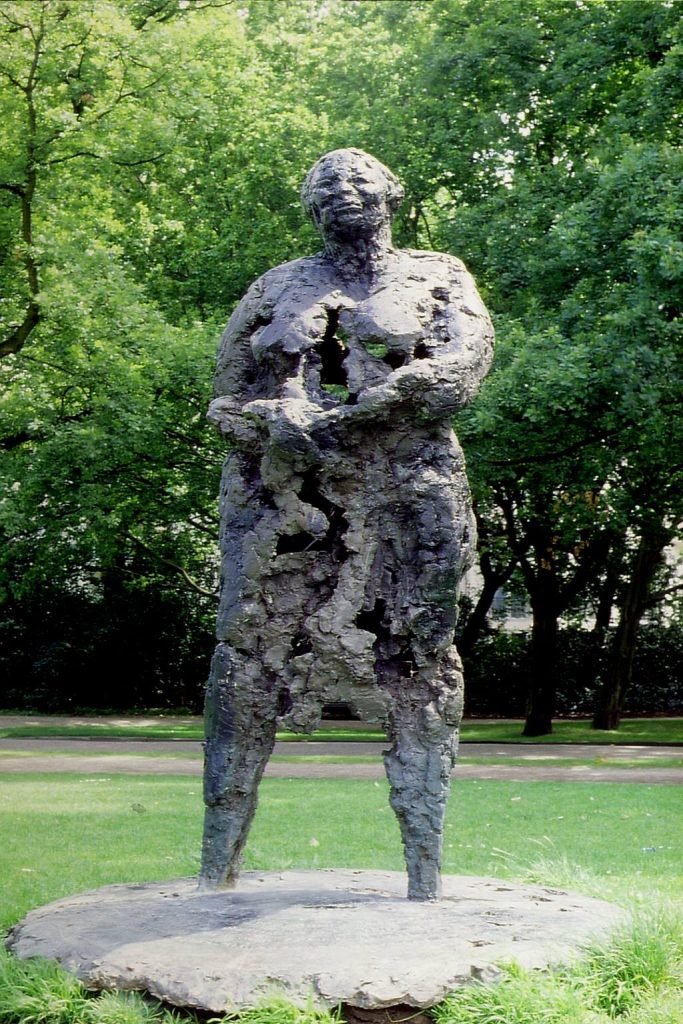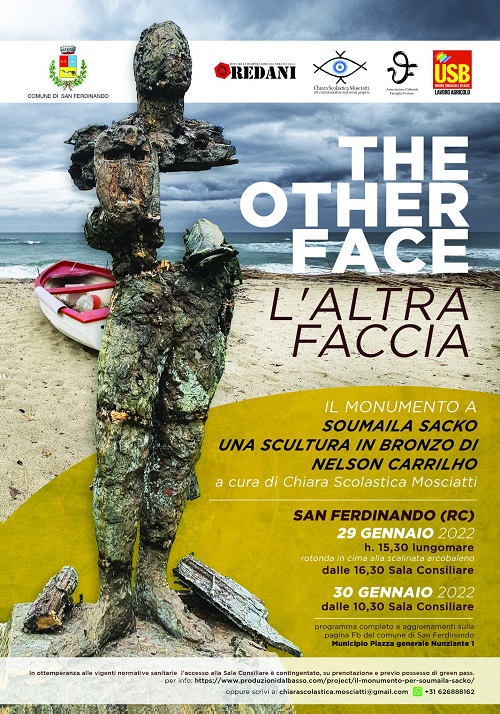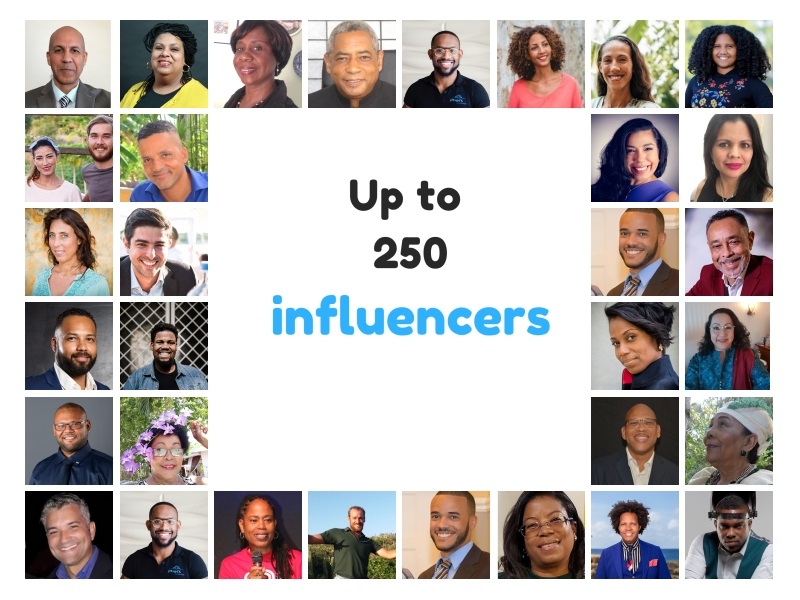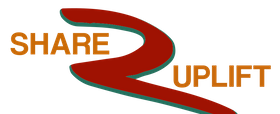Influencer Nelson Carrilho
Interview November 2022
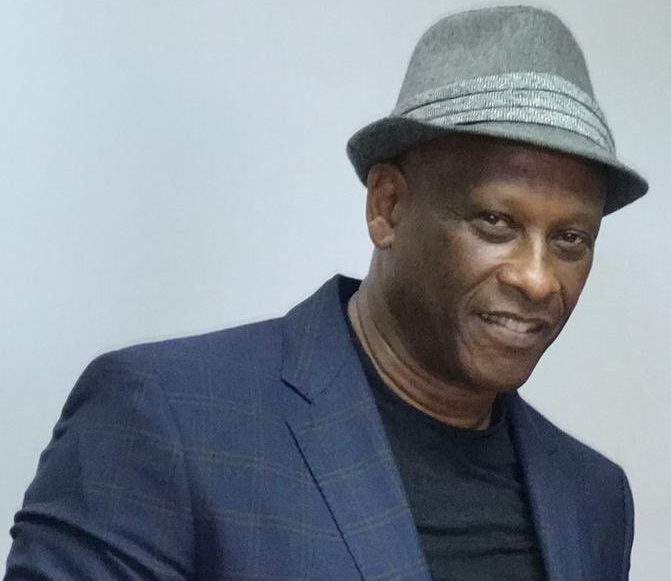
Nelson, could you share with us some information about your family life?
I was born in Curaçao to a mother that came from Antigua and my father who came from Surinam. Both my parents came to Curaçao to work, my mother was a nurse and my father worked at the Shell. In Curaçao, they met each other. I have one sister and two brothers, another brother passed away. We lived at Domi, Wecoewaweg, and Suffisant until 1964 we migrated to Holland after Shell started laying off workers. My father considered going to Surinam but choose the Netherlands as he always prioritized good education, as he considered that to be a way to improve our social economic status. I was married and have a daughter and a son. We have strong family ties, I wouldn’t have asked for better, and all of us have had a solid education here in Holland. I choose the Arts and choose to be my own boss. Balancing being a creative artist and at the same time earning a decent living as an entrepreneur has been and still is challenging at times. Officially I am retired, but I am still working. My parents have been supportive of my choices, and after they passed away, my sister is still very supportive. We talk a lot about the constant changes that are taking place in the society and world at large and how I should position myself as an artist in these circumstances. We do lots of things together. And after all these years, Curaçao still has a very special place in my heart and soul.
We know you to be a now renowned sculptor, maybe the most renowned ‘Mama Baranka’ and we want to know if becoming an artist was easy early on in your career and nowadays. Can you expand a little on this?
As an artist, I became very aware that we were dealing with an ever-changing society. Back then in the eighties, lots of people from the Antilles and Surinam migrated and came to live in Holland. I was an artist and with me some students from the Antilles and Surinam, we were demanding our place also on that platform, the so-called “public space” as an artist. The murder of the 15 – years old Kerwin Duinmeijer in 1983 by a 16-year-old skinhead, due to racist motives triggered the discussion that ultimately lead to the acceptance that an anti-racist sculpture was needed in Amsterdam. Because of our shared colonial past, we also should have the opportunity to put our works of art in public spaces. It was a hard-fought fight as the mainstream stories being told about that part of history had a shadow side that nobody preferably wanted to talk about, then and still now, in this day and age. Our side of history is being told in some places, like in books, in libraries, and more and more in the educational system, but there is so much more to be done. We live here in the Netherlands and our children, this younger generation doesn’t believe the old stories anymore and they demand our place in the public space and the society at large. There are so many creative activities taking place and this black creativity is very strong and powerful. Look at the sports and dance in the past but now also in all walks of life, this represents a big change that is taking place. But also in the world, where you can take notice of cultural expressions and expositions from Africa and the Antilles. A lot is going on.
The authorities once they accepted that a sculpture needed to be made and put in a public space, they ask me to make a sculpture of Kerwin and I didn’t accept this. I wanted to make a different type of sculpture, exemplifying mother Nature. There was a lot of resistance, but in the end, they allowed me to make what I had in mind, but I had only two months to make the sculpture ‘Mama Baranka’.
Did the killing of George Floyd lead to an acceleration of the public discourse in Holland?
Well, I believe that there was already a strong undercurrent of change underway before George Floyd was killed. It triggered lots of publicity indeed, but these spikes, tend to weather down after a while. It was an event but should we make the headlines only based on newspaper headlines on incidents?
Normally in the first years, people commemorate and put flowers, but if the sculpture is a good piece of Art, even after the stories have faded away, the sculpture will carry its own story. And this is an important trait in my work. The story is important, but over the years it still has to stand there.
We have taken notice that a documentary was made about you: ‘Nelson Carrilho – I Am a Black Sculptor‘. How did this documentary come about?
The director of the documentary approached me and he lives close by. The intention was to look for a “connection” and to offer a close-up of me. I agreed. After a half year, he changed the intention and extra added value was added to the original intention, at a moment when there were a lot of polarizing discussions going on in Europe. Society is traumatized and lots of people have difficulties dealing with this, but also offered me the opportunity to share our side of the story and by doing that create a better understanding of our side of history, instead of emphasizing the victim role that normally is so dominant when we are being portraited.
You seem to be a very sensitive person, is this the reason you ended up becoming an artist?
Well, I have developed a balance between being an artist and running my business. When I was very young I wasn’t so much in arts btw. We lived in Amsterdam when we migrated from Curaçao to Holland. In 1964 there were so many changes taking place. These were the times of the mini-skirts, maxi skirts, and long hair, the youth was protesting against the war and the establishment and there was so much creativity sprouting. This was a completely new world we came to live in from Curaçao. Also in the USA, lots of things were happening under blacks and this affected me as a youth. James Brown’s song ‘I am black and I am proud’ and Nina Simone’s song ‘Black is beautiful’ triggered me to go a look and know my history. These were the years when Malcolm X and Martin Luther King were murdered. This time in the sixties was a renaissance of creativity, it empowered me and it was the first time in my life that I was proud of myself. Because at last the other side of the coin was illustrated. Around those years, I was the only or one of the few black youths at primary and high school and the Arts Academy. I had more potential than I was taught to believe when I was in Curaçao through the educational system there. This outburst of creativity in the world became part of me and part of my story.
I have also experienced consciously the activism of students from the Antilles, like All Peterson, Fridi Martina, and Dobru back then on the 30th of May in 1969, when there was a revolt after there were labor strikes and this revolt impacted our society in Curaçao in a major way.
But we moved from Amsterdam to Zaltbommel and this was a cultural shock for me, as we were the only black family in the whole village. And this affected me, I wasn’t doing well at school and a teacher told my parents that I was very creative and maybe I should consider going to the Academy of Arts. Be aware though in 1974 / 1975 artists had no future career-wise. But my parents agreed and I went to the Academy and finished my studies and soon after that moved back to Amsterdam to live in my atelier and house, a large space, where I still live now for 40 years. It is also located in the center of Amsterdam in the Jordaan.
In the documentary, I consciously chose to name the documentary ‘I am a black artist’. I wanted to pay my respect to my parents and my ancestors, there is so much going on in me and I embraced the black culture. Because of them, I am where I am now. I am also celebrating my ancestors, opening up the doors of potential within ourselves, like I am always inspired by a drum, to illustrate this point. They started the Big Fight way back in time and because of that, I don’t need to be a martyr today. That is the reason for the title of the documentary.
We know that you have made a sculpture that was unveiled officially on the 29th of January in Calabria in Italy and this was not your first work of art outside of Holland, if we are correct. How did this come about?
Here in the Jordaan, I have my atelier where people can drop in easily and look around. One day Chiara Scolastica Mosciatti, an Italian activist, came in and we started to talk. She knew of my sculptures and my work. She came from Calabria and in this part of Italy, there was a lot of abuse taking place. Migrants were killed, disappearing where organized crime was having a strong hold on people using every means possible to repress migrants. Migrants are seen as capital to work the fields for 2 Euro per hour, and the farmers in their turn pay for the organized crime. Because forced labor is invisible, people are easily exploited. Chiara wanted to make this problem more visible by drawing attention to what was happening in Calabria. I immediately agreed to do something together with her.
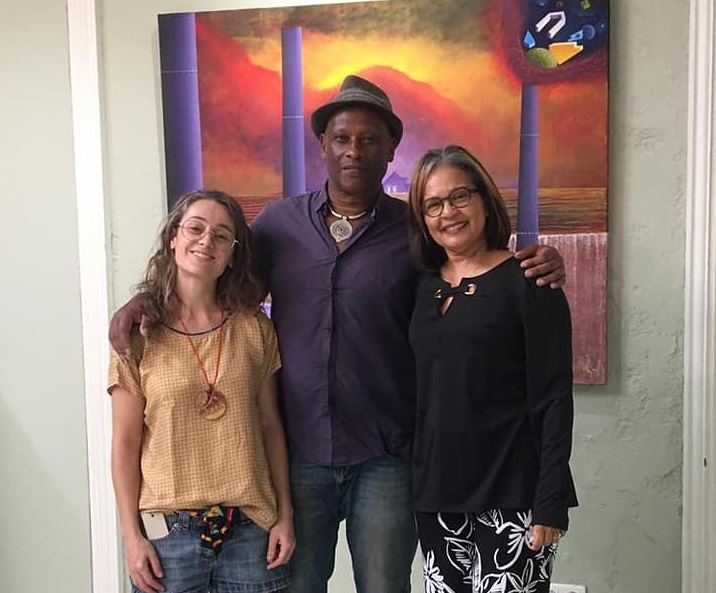
Based on my experience with the killing of Kerwin Duinmeijer and all the discussions I have had with authorities, I knew how to plead with authorities and others. It was more or less the same that was happening in Calabria. So we succeeded ultimately to build that sculpture in one of the most beautiful places in Italy, but also the most racist province of Italy. It illustrates the grandeur of people that dare to stand up for good and noble causes. These migrants are very courageous and they undertake a long journey and underway some are killed to finally arrive in Europe.
We decided to make three monuments. The second one we unveiled in January of this year, the third one is underway. We financed the first two sculptures through our own funding and donations. This was the only way to get this done. I believe that no country per se is willing to symbolize its shame in a sculpture. Sculptures speak louder than words, as they permanently stay in the location where they were placed. It appeals deeply to one’s soul. They are strong tools and these past Kings and Emperors in Europe already knew.
They were aware of its impact, and I am also aware of its impact. The ‘Mama Baranka’- sculpture was the first anti-racism monument in Europe.
The sculpture in Calabria is about migration and I thought it to be a great idea to be involved in it, creating three sculptures.
For the third sculpture, we don’t finance that on our own. We have proven what we can do. Because of all the attention and publicity surrounding the first sculpture now, the authorities come to us and we are now discussing where in Calabria, we can place the 3rd sculpture. If they want it, it can be financed by the European Fund. Originally, they didn’t acknowledge its importance. We had to address almost everything all by ourselves. There is little time to approach the EU for a subsidy. And they tend to ask so many questions and forms to fill in that I tend to throw all these forms away. We formed a team of two that was intimidated, but the lines were short and we could rather quickly make decisions and it was fun to do. But the sheer fact that with little money we had we were able to get the best out of ourselves, became a strong point to our advantage in the phase we are now for the third sculpture. So it’s paying off.
How important is art of sculpturing in the development of culture?
A sculpture has different layers, like spiritual layers and the interplay between light and darkness as a connection with nature and it maintains its power even after generations. But few have access to public space. I have invested lots of time and money in this. Not so much for the aesthetic parts of my art but because I consider the public space as a political, intellectual, educational, and spiritual space. This shouldn’t be accessible only to the elite. There is a lot of time being spent on what to do with the public space.
My story is not mainstream, as I shed a light on the dark side of mainstream history storylines. There has been a lot that happened in the last few years, yes I am free. But I am against making 4 slave monuments. We need to give it another perspective. I don’t want them to create a monument that emphasizes our victimhood. I give lots of lectures, accompanied by percussionist Ego Emechete (Nigerian), and dance illustrating the richness of my African roots. We are more than that. I am advocating something different and the moment people start thinking differently they see so many new opportunities and consider our greatness.
What is your BIG WHY or driving motivation to be who you are right now and do what you are doing now?
I know that about 99 % of my clients marginally support my background. There is an imbalance there. As this gives me my income. The moment I have earned enough, I invest it so I can my make own story. I don’t always have assignments and not always an income. This is the red line in my career.
Colonialism has taught us to believe that we are less than Europeans and color was very important. I never understood that. I was supposed to have a certain position in society and I should be happy with what they allowed me to have. But my business needs to earn money, so I have to balance between those two extremes during all those years.
Three years ago I visited Curaçao and had a presentation and 99 % of the audience was of white Dutch origins. Do you see what I mean, my name as a brand generates my income.
But my drive is to use my name to generate enough income so that I can use sculpture to send out my real storylines. Sculpture of all forms of expression in art is one of the most difficult Arts.
The costs are high, you need machines and you need people to make the sculpture. You need to be able to feel how the other person feels and see the world.
My drive is to expand my frontiers, like I am doing in Italy right now, always doing things that are way beyond my former comfort zone. It has been one of the most difficult projects I have ever had and now we are beginning to reap the seeds we planted. I know I have something to share and in Italy they are interested. Also among youth, there is a need to know the story and they know there is more than just a sculpture, it is about leaving a legacy, imprinting a footprint in their consciousness.
What are your plans for the coming years and when do you consider that you have been successful in your personal and business/professional life, let us say 5 years from now?
Two things at this moment.
Striving to increase the support for monuments to build in public spaces internationally. I am retired officially, so go into nature and travel more.
I have been a sculpturer for 40 years, and I have reached a moment in my life where I have decided to let things be as they are and take time for myself. With my small pension, I can pay the rent and now I go with the flow more often. In the past with my children being young, I needed to work hard to make ends meet at the end of the month. Next year I will have made another sculpture, the 3rd one, in Italy, for now, I will let things unfold as they unfold.
I am older and wiser in my spiritual development. I have just had a lecture to a winti group. People apparently want to know my story. I have a person that has a burnout and the only way to get out of it is by giving his creativity the time to help release his hurts so that he can connect again with his highest potential.
Helping people to develop themselves by awakening their creative strengths, is what keeps coming up in my mind.
Do you use your inner voice to evaluate when dilemmas show up? How does that work for you?
As soon as I said to work on the sculptures in Italy, the ideas came pouring in like let’s try this, and this on top of my knowledge and skills as a sculpturer it all boils down to how much trust you have in trusting the process.
If you say yes to something, good things will cross your path.
The first sculpture was welcoming to migrants. It is developed by getting into slowly but surely in conversations with different people. Chiara once asked me to borrow my sculptures so that people could see my work in Italy and this would promote our joint project. So she got my collection and one day, as I was in my favorite café in Amsterdam, she called me, sobbing and panicking as my whole collection was stolen. Chiara was so afraid that I would be pissed off and break our relationship, but I considered it an exposure opportunity to the project we were working on. Chiara lives in a small village where they don’t steal. I considered it a test, again, as I was used to getting tested frequently as I didn’t have a monthly fixed income and I trusted that everything will turn out well as long as I kept working.
So how do I use my inner voice, by really believing? And sculpturing is a form of meditation, I would say. You can sense that you are in a flow at times. If I am challenged I go to my working place and start sculpturing and after that epiphanies start happening, someone walks in that I need to meet, or I get an insight on how to address a challenge.
How are you trying also to keep up with your knowledge and skills levels?
Just the fact that here in the Jordaan I can let people tell me their stories. That is how. I am very grateful for the parents that I have had. Because now I am very aware of the importance of having the privilege of having experienced good parents, it is unique.
I have learned to listen, it isn’t always about colonialism and slavery btw, it is about humanity. This ability I can transform into a sculpture. The whole of ‘Mama Baranka’, is its strengths and power. It contributes to the healing of the whole society.
What are your strengths?
The energy field that surrounds me. This is what attracted my first wife that was of Antillean descent. She kept laughing at me and tapping jokes. I am positive, healthy, and driven to get things done in my field of Art.
Do you have hobbies or interests that you are also passionate about?
Go and check out the documentary. You will see that I love African dancing. We have a physical culture in the Caribbean, and dancing has so many commonalities with sculpturing.
If you as Nelson would meet a stranger on the bus (let’s say in Nariobi, Kenia) and they would ask you to introduce yourself, what would you answer?
The African in myself would feel that it is home coming. If it would be an elderly, I would salute him with “Hi uncle”.
How would you describe Nelson in one word or one sentence?
I see the whole world as a Big Joke.
What is a trait that is still a work in progress?
I have chosen to not have a partner. I know myself too well. If I want to maintain my creativity. It means that a relationship will require too much responsibility. That is why I draw boundaries. But on the other hand, maybe a partner can inspire me even more. But anyway, I don’t dare to try that out.
What was a defining moment in your life?
Three moments, I want to mention:
- The moment I went to the Academy of Arts as a youngster;
- The moment I returned to Amsterdam and started my atelier and living space, here in the Jordaan 40 years ago, where lots of tourists passed by;
- My activist side that has now reached Europe, opening my outlook on what the possibilities are for me, this outlook has leapfrogged after my sculptures were revealed away from Holland, which has limited room. Holland in Arts is more interested in paintings.
What would you want your Loved Ones, family, friends, and others to say about you let’s say 20 years from now?
No, no, I don’t want to experience that, I would almost 90 years old. I would say, if I have to leave tomorrow, I will leave tomorrow.
What makes you stay optimistic about the future of Curaçao, Holland and the world in general?
Because of social media, we were taught a lot of different things. All sorts of cultures and continents we can meet via social media. I have discovered a lot more commonalities instead of differences and I am more convinced than ever that the world needs Africa. This is while there is so little known about Africa. That is what makes me optimistic. We have so much in common, and in the end what remains is our “humanity”. This is what makes me optimistic about the future. The Youth has a different view of the world. This has changed my way of looking at different cultures in the world. We need a different way to look at the world.

Door het doel geraakt voor Camini
This sculpture, representing an archer, was made in 2003 and commissioned for the 2004 summer Olympics in Greece by the NOC*NSF Olympic Sport & Art Contest Athens 2004. It was unanimously chosen as the winning submission by the jury, consisting of Eelco Brinkman, Rudi Fuchs and Monique Velzeboer, to represent the Netherlands at the Olympic games. It is a stunning example of Nelson’s ability to create a sculpture with a specific message and perfect execution. It is beautifully conceived and composed to express the highest goals of competition: selfless discipline and the aim for a greater and more noble goal. The statue pays homage to the ancient Olympic games with the head of the figure bent backwards, resembling a Greek warrior, and the bow held by a perfectly vertical and powerfully muscled arm. The right arm is holding back the unrealized arrow and the entire figure rests athletically on an elbow. The two feet are buried, as the feet of Nelson’s figures often are, into the ground.
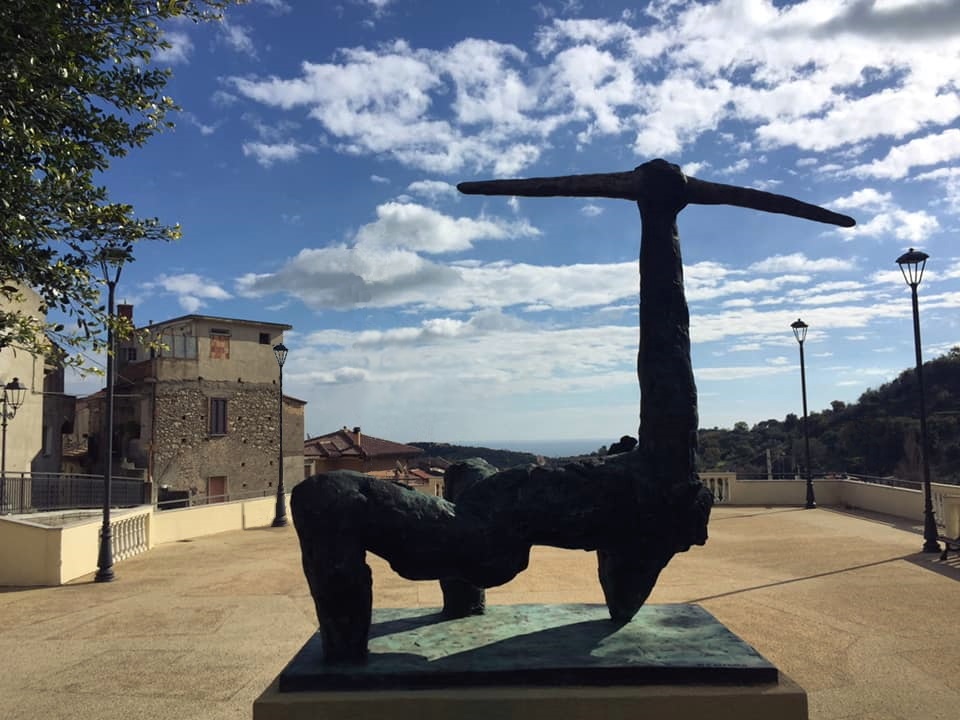
However, rather than pointing the arrow horizontally into the distance, the figure points the movement and arrow upwards, towards the sky. Nelson was inspired by the ethos of the Olympics when the International Olympic Committee (IOC) was founded in 1984 in Paris by Baron Pierre de Coubertin and Demetrius Vikelas. The goal of the Olympic movement was “to contribute to building a peaceful and better world by educating youth through sport practiced in accordance with Olympism and its values.” Therefore, Nelson conceived of a sculpture of an archer who does not aim at a bull’s eye to be victorious. Instead, he aims at a much higher goal, and with that, he brings people closer together across borders and helps to achieve world peace.
More info or connect
Nelson Carrilho sculptor on Facebook
E-mail: nelsoncarrilho.sculptor@gmail.com
Carrilho on Exto.nl
Article in Dutch by Sanne de Boer – L’Altra Faccia in Alcabria.
One of the 250 Influencers of Curaçao
Nelson Carrilho is a driven, sensitive, spiritual, optimistic, presenter, dancer, artist, and proud black sculptor that is also an entrepreneur. He doesn’t shy away from making his opinions known on topics regarding colonialism, slavery, immigrants, and migration. Over the 40 years of his career as a sculptor, he has created some powerful sculptures, like ‘Mama Baranka’ and ‘The Other Face’ in Calabria, Italy in a time when so much is changing in the societal discourse on the history of colonialism, slavery, and migration. The shadow side of mainstream history and migration is now being shared more and more. At an early stage of his career, he recognized the importance of public space and the long-term impact sculptures can have compared with other forms of artistic expression. Sculptures speak louder than words as they permanently stay in the location where they were placed, and they appeal deeply to one’s soul. After long discussions with authorities, his perseverance and determination has ultimately made him create ‘Mama Baranka’ within two months’ notice according to his views, now a renowned symbol against racism. This year, he also gained international recognition by revealing a sculpture in Calabria, Italy symbolizing the right of migrants in one of the most racist provinces of Italy. He is now making another breakthrough, as his works are now not necessarily limited to the limited public space in Holland. Over the years his drive has always been directed toward expanding his frontiers and he definitely has a story to tell and share, there is more than just sculptures he has made, but it is also about leaving a legacy. For all these reasons, we consider Nelson to stand out and we consider him one of the 250 influencers of the island, representing the Cultural sector. Look at the list of the Influencers we have interviewed or reported on, up to now.
The goal of the core group of Share2Uplift for 2022
The goal of the Share2Uplift movement is to: “Identify 250 leaders from all walks of life to connect, align and create impactful changes in all walks of life, which includes intergenerational collaboration by the end of 2022.” We will use interviewing Influencers, meet-and-greet events, “train-the-trainers”-programs on “Emotional Mastery” and “Intentionality “as national intervention strategies, to reach this goal on top of our goal to scale up the possibilities to connect, align and create impact via a virtual platform. We believe that by collaborating with Miguel Goede on the virtual Vision 2030 platform, we will accelerate the possibilities to connect the diaspora and others elsewhere in the world and on the island willing to constructively create impactful changes in Curaçao, to join.
As Share2Uplift, we are fully trying to align with this thinking of Center for Curriculum Redesign to promote this agenda in our educational systems and workplace. So, in that sense, we fully support any initiative to make our educational system 21st-century proof.
Share2Uplift aligners are those that:
– Create an inspiring vision of the future;
– Motivate and inspire people to engage with that vision;
– Manage the delivery of the vision;
– Coach and build a team, so that it is more effective at achieving the vision. These criteria are now being polished.
We also consider these 5 values the most important ones for Share2Uplift aligners. They are:
• Peace from within;
• Compassion;
• Respectfulness;
• Integrity;
• Responsibility.
As we will progress towards this goal, we will update you on the progress.
This week we will share some short videos, articles and a podcast of sculptor Nelson Carrilho. We will upload one of these videos every day on our facebook.com/share2uplift page.
Nelson Carrilho impressie from Robin van Erven Dorens on Vimeo
Nelson Carrilho – De Gouden Koets – YouTube
- Opium – Beluister Het gesprek – Robin van Erven Dorens (23 maart) | Podcasts | NPO Radio 4
